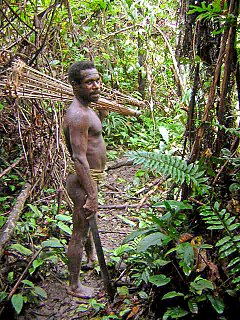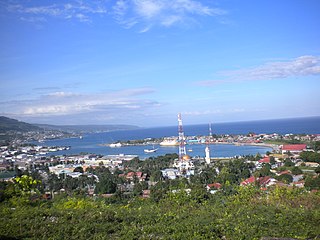
Central Sulawesi is a province of Indonesia located at the centre of the island of Sulawesi. The administrative capital and largest city is located in Palu. The 2010 census recorded a population of 2,633,420 for the province, while the latest official estimate is 2,839,290. Central Sulawesi has an area of 61,841.29 km2 (23,877 sq mi), the largest area among all provinces on Sulawesi Island, and has the second-largest population on Sulawesi Island after the province of South Sulawesi. It is bordered by the provinces of Gorontalo to the north, West Sulawesi, South Sulawesi and South East Sulawesi to the south, by Maluku to the east, and by the Makassar Strait to the west. The province is inhabited by many ethnic groups, such as the Kaili, Tolitoli, etc. The official language of the province is Indonesian, which is used for official purposes and inter-ethnic communication, while there are several indigenous language spoken by the Indigenous peoples of Central Sulawesi. Islam is the dominant religion in the province, followed by Christianity which are mostly adhered by the people in the eastern part of the province.

The Nuaulu, Naulu or Nunuhai are a tribe located in Seram, Maluku, Indonesia.
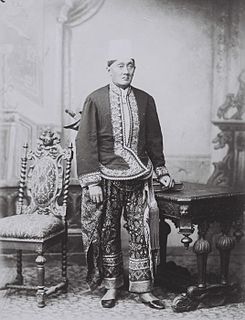
A regency is a second level administrative division of Indonesia, directly administrated under a province. The Indonesian term kabupaten is also sometimes translated as "municipality". Regencies and cities are divided into districts.

Sukabumi Regency is a regency (kabupaten) in southwestern Java, as part of West Java province of Indonesia. The regency seat is located in Palabuhan Ratu, a coastal district facing the Indian Ocean. The regency fully encircles the administratively separated city of Sukabumi. Covering an area of 4,161.00 km2, the regency is the largest regency in West Java and the second largest regency Java after the Banyuwangi Regency in East Java. The regency has a population of 2,434,221 with a large part of it living in the northeastern part of the regency that encircles Sukabumi City, south of Mount Gede. A plan to create a new regency, the North Sukabumi Regency is currently waiting for the approval of the central government.
The Batin are a sub-group of Malay people that inhabits the interior parts of Jambi province

The Acehnese are an ethnic group from Aceh, Indonesia on the northernmost tip of the island of Sumatra. The area has a history of political struggle against the Dutch. Majority of the Acehnese people are Muslims. The Acehnese people are also referred to by other names such as Lam Muri, Lambri, Akhir, Achin, Asji, A-tse and Atse. Their language, Acehnese, belongs to the Aceh–Chamic group of Malayo-Polynesian of the Austronesian language family.

Poso Regency is a regency of Central Sulawesi Province of Indonesia. The principal town lies at Poso.
Kendayan, or Salako (Selako), is a Malayic Dayak language of Borneo. The exact number of speakers remains unknown, but is estimated to be around 350,000.

Gorontaloan or Hulandalo people are the native people of the northern part of Sulawesi. They are the most populous ethnicity in the Minahasa Peninsula. The Gorontaloans are predominantly Muslim. Their native language is Gorontaloan. The Gorontaloans have traditionally been concentrated in the provinces of Gorontalo, North Sulawesi, and the northern part of Central Sulawesi.
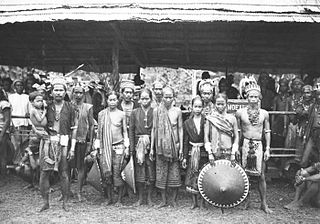
Mualang are an indigenous people of West Kalimantan from the Dayak group and a sub-ethnic of the Iban people. They speak the Mualang language and they are mostly concentrated in areas in the Sekadau Regency and Sintang Regency of West Kalimantan, Indonesia. The specific districts where the Mualang people live include:
- Belitang Hilir district, Sekadau
- Belitang district, Sekadau
- Belitang Hulu district, Sekadau
- Sepauk, Sintang and its surrounding region
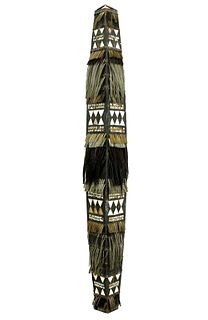
The Kanta is a traditional shield of the Toraja and Pamona people of Tana Toraja Regency, South Sulawesi and Poso Regency, Central Sulawesi, Indonesia respectively.
Aneuk Jamee or Ughang Jamu people are a group of people spread along the west and south coast of Aceh, starting from Singkil, South Aceh Regency, Southwest Aceh Regency and Simeulue Regency. The Aneuk Jamee people are originally Minangkabau people who have migrated to Aceh in the 19th century, and intermarried with the Acehnese people, Kluet people, Singkil people and Devayan people. In terms of language, the Anuek Jamee language is considered as a dialect of the Minangkabau language that have a mixture of Aceh's native languages.

The Lampung people, also commonly referred to as Ulun Lampung, are an ethnic group indigenous to Lampung province and parts of South Sumatra province of the southern and central region that occupy areas such as Martapura, Muaradua at upstream of Komering River, Kayu Agung, Tanjung Raja at downstream of Komering River, Merpas on the southern side of Bengkulu province, as well as Cikoneng in the southwest coast of Banten province, Indonesia. They speak the Lampung language, a Lampungic language estimated to have 1.5 million speakers.

Singkil people are an ethnic group of people found in Aceh Singkil Regency and Subulussalam, Aceh province, Indonesia.
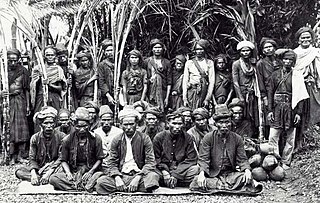
The Alas people are an ethnic group that inhabits Southeast Aceh Regency, Aceh, Indonesia. They speak the Alas language, which is related to the Batak languages.
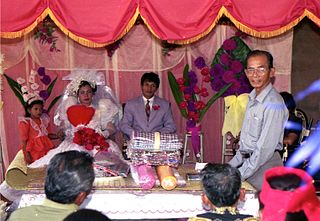
Pamona people inhabits almost the entire Poso Regency, parts of Tojo Una-Una Regency and parts of North Morowali Regency, Central Sulawesi; in fact there are some even in East Luwu Regency of South Sulawesi, whereas a small remainder lives in other parts of Indonesia. The ancestors of the Pamona people originally came from the land of Salu Moge because they were once from the mountains which is far from the central governance thus they were brought down by Macoa Bawalipu of Wotu, East Luwu Regency to be nearer to the central governance, which is the surrounding region of Mangkutana. But it was until a revolt by the Darul Islam (Indonesia) rebellion broke out that they spread to Central Sulawesi and to other regions. If there are Pamona people in certain regions, then it is common that a Rukun Poso is formed there, which serves as a means of a group of people from a common ethnic background to engage in various activities within the region. Almost all of the Pamona people practices Christianity. Christianity came into the region about 100 years ago and until today it is widely accepted as the religion of the people. Today, all churches of common denomination are grouped under the Central Sulawesi Christian Church headquartered in Tentena, Poso Regency, Central Sulawesi, Indonesia. A large part of the common folk uses Pamona language and Bahasa Indonesia language that is mixed with the local slang. The Pamona people are usually farmers, government officials, pastors, entrepreneurs and so on.
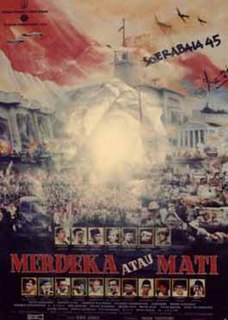
Soerabaia 45 is an Indonesian film released in 1990. The film was directed by Imam Tantowi and starred Nyoman Swadayani, Leo Kristi, and Usman Effendy. The story of the film is based on the 1945 Battle of Surabaya between pro-independence Indonesian soldiers and militia against British and British Indian troops as a part of the Indonesian National Revolution.
Mante people or also spelt as Mantir, are one of the earliest ethnic group frequently mentioned in legendary folklore to have inhabited Aceh, Indonesia. This ethnic group along with other indigenous people such as the Illanun people, Sakai people, Jakun people, Senoi and Semang, are the ethnic groups that formed the existing Acehnese people today. The Mante people are regarded as part of the Proto-Malay people group that initially settled around the region of Aceh Besar Regency and in the interior jungle. These indigenous people were thought to have migrated to Aceh through the Malay peninsula. In the Acehnese legend, the Batak and Mante people were mentioned as the descendants of Kawom Lhèë Reutōïh ; which were also one of the indigenous peoples in Aceh, Indonesia. Today, this people are extinct or have disappeared as a result of intermarriage with other non-indigenous people groups that arrived later. To date, there are still no strong scientific evidence for the existence of this people.

Islam in Central Sulawesi, a province of Indonesia, is the majority religion embraced by around 75% of the population, out of a total of 2,683,722 inhabitants . The propagators of Islam were thought to enter the Central Sulawesi through neighboring regions, namely Bone, Wajo, and Mandar from the south and west routes, and through Gorontalo and Ternate from the north and east routes via Tomini Bay and Tolo Bay.

